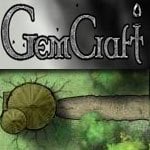- Wondering how to get Monopoly GO! free rolls? Well, you’ve come to the right place. In this guide, we provide you with a bunch of tips and tricks to get some free rolls for the hit new mobile game. We’ll …
Best Roblox Horror Games to Play Right Now – Updated Weekly
By Adele Wilson
Our Best Roblox Horror Games guide features the scariest and most creative experiences to play right now on the platform!The BEST Roblox Games of The Week – Games You Need To Play!
By Sho Roberts
Our feature shares our pick for the Best Roblox Games of the week! With our feature, we guarantee you'll find something new to play!Type Soul Clan Rarity Guide – All Legendary And Common Clans Listed!
By Nathan Ball
Wondering what your odds of rolling a particular Clan are? Wonder no more, with my handy Type Soul Clan Rarity guide.
GemCraft Review
Tired of the usual tower defense games? While GemCraft isn’t a revolutionary effort, it adds some new wrinkles into the usual “build, defend, build” cycle in the genre re-popularized by Desktop Tower Defense.

Tired of the usual tower defense games? While GemCraft isn’t a revolutionary effort, it adds some new wrinkles into the usual “build, defend, build” cycle in the genre re-popularized by Desktop Tower Defense.
For the uninitiated, a “tower defense” game normally refers to point-and-click mouse games that require you to defend certain positions on a map by placing defensive units. These units are typically purchased with gold, and the gold is normally earned by defeating and repelling attackers. Depending on the game, your units and gold might carry over from stage to stage, but more commonly, you start with a blank slate each stage.
In GemCraft, the defensive units are, appropriately enough, gems. You place them into defensive towers and purchase them with mana, which serves as the game’s currency. Mana is mainly earned by defeating the waves of monsters that try to overrun your base, although is also does generate slowly by the second. Gems are not anchored to a specific tower, either – You can freely switch them between towers, or even use them as grenades to lob at enemies in a last-ditch effort to save yourself.
The wrinkles come in the form of GemCraft‘s customization. Although you can purchase higher-level gems outright, the more satisfying pursuit is to cannibalize your existing gems by combination. For example, if you combine two Level 3 gems, it will produce a Level 4 gem. Each gem also has a color that gives it a special ability. Red gems shoot faster, while green gems add poison, and purple gems slow down enemy units. If you merge two different colors, it weakens the overall power of the gem, but maintains the abilities. A red-green gem is a quick shooting poison spreader, for example.
Because you have to pay for tower positions, the game definitely favors hoarding and building up a few powerful gems as opposed to laying out 20 low-powered gems. Generally, I had better success in stages by focusing on four to five gems, getting them up to Level 6 or 7, as opposed to trying to balance out my forces. Since some of the tougher monsters are immune to low-level gem attacks, this strategy also insures a higher hit rate.
In addition to the gem combining, GemCraft also features carryover skills and experience points. As you make your way through stages, you can power up skills, such as extra mana per monster kill and cheaper gem production. This feature encourages you to maximize your score on earlier stages, as opposed to the typical tower defense game, where there is little point to replaying a stage.
The only gameplay issue with GemCraft would be the skills and general strategy, though. The game’s difficulty peaks at about the quarter point, right around the first epic battle. In this stage, you have to deal with a massive boss that requires near-perfect planning. However, if you can get past him, the rest of the game is a breeze, as the later skills you earn radically reduce the difficulty.
Because of this, the lasting value of GemCraft is somewhat compromised. I loved my first day playing the game, and the first epic battle was challenging without venturing into frustrating. But after that, GemCraft quickly becomes a by-the-books affair. I still found it all endearing enough to finish, but the repetition makes GemCraft veer more toward very good than great.

The good

The bad
More articles...
Monopoly GO! Free Rolls – Links For Free Dice
By Glen Fox
Wondering how to get Monopoly GO! free rolls? Well, you’ve come to the right place. In this guide, we provide you with a bunch of tips and tricks to get some free rolls for the hit new mobile game. We’ll …Best Roblox Horror Games to Play Right Now – Updated Weekly
By Adele Wilson
Our Best Roblox Horror Games guide features the scariest and most creative experiences to play right now on the platform!The BEST Roblox Games of The Week – Games You Need To Play!
By Sho Roberts
Our feature shares our pick for the Best Roblox Games of the week! With our feature, we guarantee you'll find something new to play!Type Soul Clan Rarity Guide – All Legendary And Common Clans Listed!
By Nathan Ball
Wondering what your odds of rolling a particular Clan are? Wonder no more, with my handy Type Soul Clan Rarity guide.







